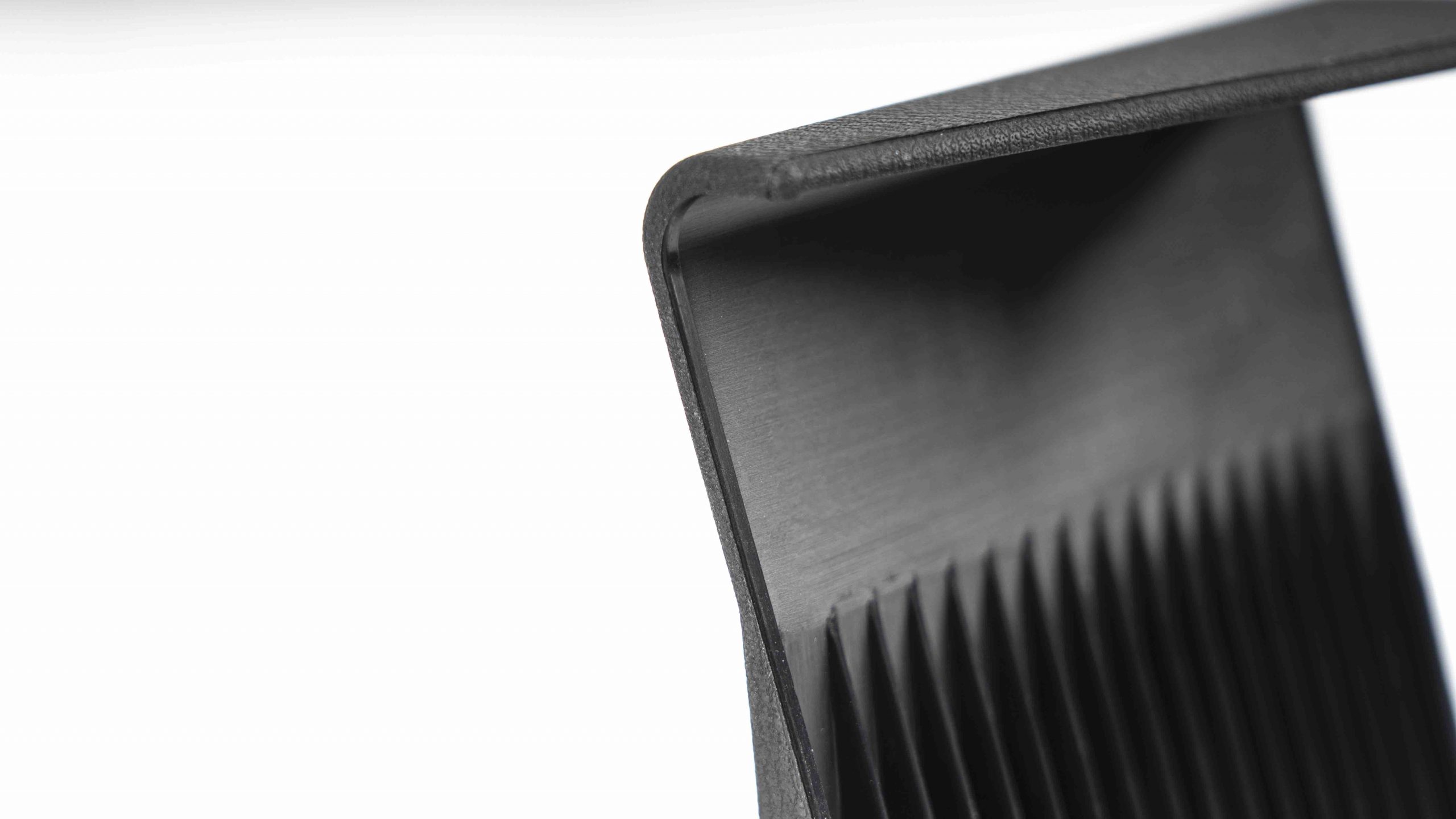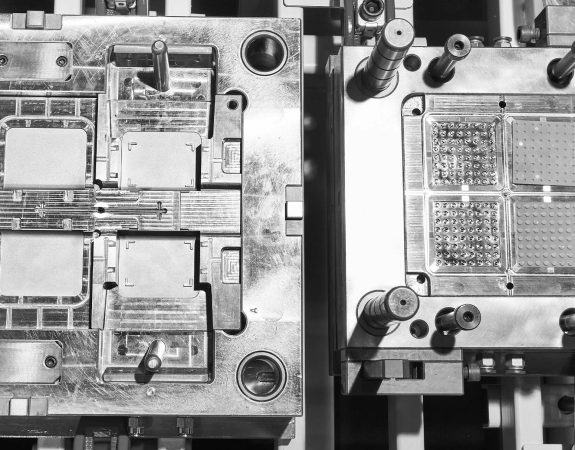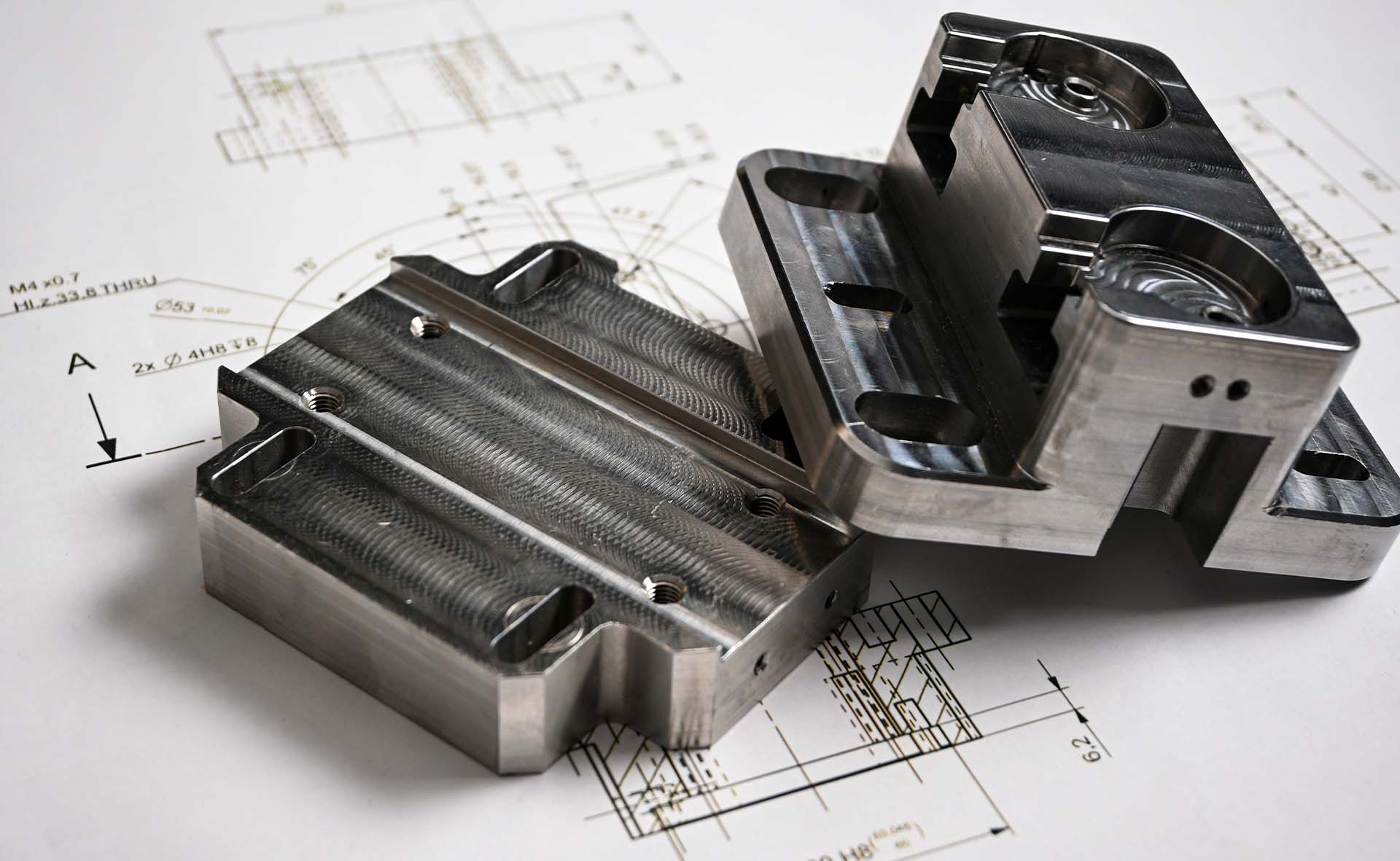For the convenience of industrial designers, design engineers and mold manufacturers, SPI (the Society of the Plastic Industry) has set a standardized surface finish for injection molds, known as SPI mold finish.
This article covers the standard SPI mold finishes we offer, recommended finish for each material, and results you can expect to get the most out of injection molding.
The SPI surface finish standard covers 12 SPI grades of polish finishes split across four categories: glossy (A), semi-glossy (B), matte (C) and textured (D). The SPI mold finish chart below describes all twelve SPI surface finishes, including the finishing method and typical surface roughness.
| Finish | SPI* standard | Finishing method | Surface roughness Ra (μm) |
|---|---|---|---|
| Super High Glossy | A-1 | Grade #3, 6000 Grit Diamond Buff | 0.012 – 0.025 |
| High Glossy | A-2 | Grade #6, 3000 Grit Diamond Buff | 0.025 – 0.05 |
| Normal Glossy | A-3 | Grade #15, 1200 Grit Diamond Buff | 0.05 – 0.10 |
| Fine Semi-glossy | B-1 | 600 Grit Paper | 0.05 – 0.10 |
| Medium Semi-glossy | B-2 | 400 Grit Paper | 0.10 – 0.15 |
| Normal Semi-glossy | B-3 | 320 Grit Paper | 0.28 – 0.32 |
| Fine Matte | C-1 | 600 Grit Stone | 0.35 – 0.40 |
| Medium Matte | C-2 | 400 Grit Stone | 0.45 – 0.55 |
| Normal Matte | C-3 | 320 Grit Stone | 0.63 – 0.70 |
| Satin Textured | D-1 | Dry Blast Glass Bead #11 | 0.80 – 1.00 |
| Dull Textured | D-2 | Dry Blast #240 Oxide | 1.00 – 2.80 |
| Rough Textured | D-3 | Dry Blast #24 Oxide | 3.20 – 18.0 |
| As machined | – | Finished to the machinist’s discretion | 3.20 (with visible machining marks) |
For product designers and design engineers, it’s essential to understand that SPI finishes produce different results depending on the injection molded plastic that you choose.
This section gives you an idea of what to expect when selecting different grades of SPI finishes for your plastic injection molded parts. It also includes a table of common injection molding plastic material and the recommended SPI finish for each material.
SPI glossy finishes are made with diamond buffing, which results in the shiniest and glossiest finish possible. Such finishes yield excellent results when paired with transparent materials like PMMA (Acrylic). Due to the high polish effect, it is great in applications such as injection-molded lenses, mirrors, and clear cases.
It is worth noting that it is virtually impossible to apply Grade A finishes to a material like TPU because such plastics have high abrasion resistance and are thus resistant to the buffing process.
| SPI finish | Excellent | Good | Average | Not recommended |
| A-1 (Glossy) | Acrylic | ABS, PC, PS, Nylon | HDPE, PP, TPU | |
| A-2 (Glossy) | Acrylic | PC | ABS, HDPE, PP, PS, Nylon | TPU |
| A-3 (Glossy) | Acylic, PC | ABS, PS, Nylon | HDPE, PP | TPU |

SPI semi-glossy finishes are made with sandpaper, which results in some glossiness. Such finishes are great for concealing machining, moulding and tooling marks and can achieve good visual appearance. This makes it great for many consumer products.
Due to the sanding technique employed, Grade B finishes leaves behind characteristic linear scratches producing a very distinct pattern.
| SPI finish | Excellent | Good | Average | Not recommended |
| B-1 (Semi-Glossy) | PS | ABS, Acrylic, HDPE, PC, PP, Nylon | ||
| B-2 (Semi-Glossy) | PS, Nylon | ABS, Acrylic, HDPE, PC, PP, Nylon | TPU | |
| B-3 (Semi-Glossy) | ABS, HDPE, PP, PS, Nylon | Acrylic | PC, TPU |

SPI matte finishes are made with grit sanding stones. This technique makes it possible to remove machining marks without creating a glossy finish. It can support product designs that need a more subdued or muted appearance.
Because Grade C finishes will reflect less light, fingerprints on products that are constantly handled are less noticeable than with a highly polished finish. This makes them great in applications such as keyboards and laptop frames.
| SPI finish | Excellent | Good | Average | Not recommended |
| C-1 (Matte) | ABS, HDPE, PS, PP, Nylon | Acrylic, TPU | PC | |
| C-2 (Matte) | ABS, HDPE, PS, PS, Nylon | Acrylic, TPU | PC | |
| C-3 (Matte) | ABS, HDPE, PS, PS, Nylon | Acrylic, TPU | PC |
SPI textured finishes are made with pressure blasting, which results in a flat, dull and rougher finish. Such finishes can improve the end user’s ability to better grip the part and increase paint or sticker adhesion. This makes it great in applications like injection-molded steering wheels, handles and shop vac.
Although Grade D finishes provide excellent results with most plastics, designers should avoid selecting SPI D2 or SPI D3 finishes with Polycarbonate (PC) material.
| SPI finish | Excellent | Good | Average | Not recommended |
| D-1 (Textured) | ABS, HDPE, PC, PP, PS, Nylon, TPU | Acrylic | ||
| D-2 (Textured) | ABS, HDPE, PS, PS, Nylon, TPU | Acrylic | PC | |
| D-3 (Textured) | HDPE, PP | ABS, PS, Nylon, TPU | Acrylic | PC |


Find out which SPI finish is right for your part
Do you have a design you want to get injection moulded but are unsure which material or SPI grade to use for the best results? Picking between the different grades of finishes can be tricky. Drop us a message here and specify your project requirements. Our mould tool and injection mould engineers are available to help with your project from design to production.
